Here is my script (example inspired from here and using the reorder option from here):
library(ggplot2)
Animals <- read.table(
header=TRUE, text='Category Reason Species
1 Decline Genuine 24
2 Improved Genuine 16
3 Improved Misclassified 85
4 Decline Misclassified 41
5 Decline Taxonomic 2
6 Improved Taxonomic 7
7 Decline Unclear 10
8 Improved Unclear 25
9 Improved Bla 10
10 Decline Hello 30')
fig <- ggplot(Animals, aes(x=reorder(Animals$Reason, -Animals$Species), y=Species, fill = Category)) +
geom_bar(stat="identity", position = "dodge")
This gives the following output plot: 
What I would like is to order my barplot only on condition 'Decline', and all the 'Improved' would not be inserted in the middle. Here is what I would like to get (after some svg editing):
So now all the whole 'Decline' condition is sorted and the 'Improved' condition comes after. Besides, ideally, the bars would all be at the same width, even if the condition is not represented for the value (e.g. "Bla" has no "Decline" value).
Any idea on how I could do that without having to play with SVG editors? Many thanks!

